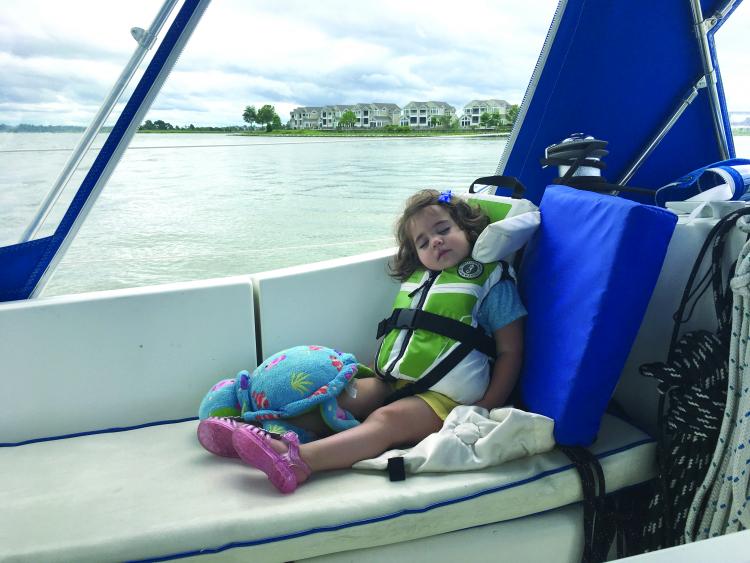How To Be Safer While Cruising as a Family
The sailing community was rocked last month by the tragic death of three-year-old Zeinobiyah (Zobby) Soetekouw after she drowned in Hawkesburry River, Australia, where her family’s cruising boat was anchored. This is the Medusa of the boating world; it’s too raw and frightening to face.
However, it is something we must think about constantly. I think the biggest lesson we can learn from Zobby’s death is that it happened in plain daylight when at least eight of her siblings were onboard. They were anchored. She had spent her entire life on the boat and so likely knew her footing. Her siblings had a type of buddy system in which older kids were in charge of younger ones, and weather was not a factor.
It’s easy to think about safety in heavy weather or while underway, but “normal” circumstances pose just as much of a risk, if not more. Complacency can kick in at the dock or at anchor or when there is a crowd. Everyone may think someone else is watching the kids. Too be explicitly clear, in no way am I suggesting Zobby’s family is at fault for her death—all sources indicate she was a well-cared for little girl. This was a horrible accident that could have happened to any of us. That is why I am writing this article.
When I was pregnant with our first child, I relentlessly asked any boater who had kids how they kept them safe on board. We initially wouldn’t have our then infant topside while underway; in retrospect that was a little excessive. I found the following seven tips very helpful.
- Lifejackets (PFDs) on as soon as they get out of the car at the marina.
- One adult always has the kids in eyesight, and this job is communicated between adults, not assumed.
- Children never on deck without an adult (mine are ages two and four and will be given more independence as they get older).
- PFDs worn when on deck if underway.
- Companionway blocked at night, so curious wanders or sleep walkers can’t sneak out.
- Tethers used for very active kids.
- Sailing knife relocated to where it is still accessible to adults but not kids.
If you want an extra layer of safety, consider alarm wristbands. They sound when they come in contact with water. Some people swear by life-line netting, but I think it offers a false sense of security (however it is probably useful for keeping toys in the boat if you have a thrower).
Lastly, if you follow this column, you may have seen that we often tether our kids in the cockpit instead of having them in life jackets. This was because our oldest did not fit in a PFD—even the infant sized ones—until she was about 18 months old. We reasoned that the tether would keep her in the boat and that was the goal.
After having a long discussion about this with fellow SpinSheet columnist, Cindy Wallach, she convinced me that the lifejacket was the way to go without exception. Her reasoning is that kids need consistency for follow-through, so you want them to associate PFD and boat, not PFD and parking lot or sometimes on the boat and sometimes not because they are in a tether. We got good buy-in from the kids by having them pick out their own PFDs. My highly free-spirited two-year-old seems to prefer wearing the PFD to her tether.
We love boating because it is family centered and can be enjoyed across one’s lifetime. As in most things, a little planning and a little common sense can make it a safe and fun activity for kids and adults of all ages.
~by Sharon Praissman Fisher





